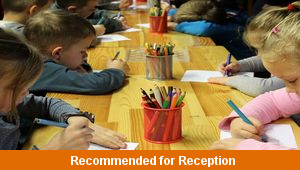Lesson Four – Story Puppets

This literacy teaching pack for the Foundation Stage gets the children to model how to re-tell part of a traditional story by using puppets to support dialogue of the characters to create different scenes from the narrative sequence of events.
The class can select alternative characters in a story and suggest how they might impact and change the narrative sequence of events in the story.
Download this teaching pack including a lesson plan, classroom activities and an interactive presentation to model how to re-tell part of a traditional story by using puppets to support dialogue of the characters to create different scenes from the narrative sequence of events
Activities in this teaching pack include a shared reading text to identify the structure and sequence of the narrative events in a traditional story and a template to select and record dialogue that might have been said by characters in different parts of a traditional story.
The interactive presentation gets the children to explore how to re-tell part of a traditional story by using puppets to support dialogue of the characters.
This lesson is part of a literacy scheme of work to get the children to investigate and describe some of the different characters, settings and plot events that feature in the traditional story of the Gingerbread Man. There are teaching activities for shared learning, differentiated worksheets to support independent learning and interactive presentations to introduce concepts and key skills.
-

Halving Things
Explain and model how to find and record the halves of some of the different objects that can be used at home and in school
-

School Friends
Identify and learn classroom routines and organisation by exploring and describing information and likes and dislikes for each of their classmates
-

Classroom
Identify the location and function of different objects used in the classroom and explore how to formulate rules to manage the classroom safely
-

Shape Patterns
Identify, describe and compare the sequences of geometric shapes that have been used to create a range of different patterns
